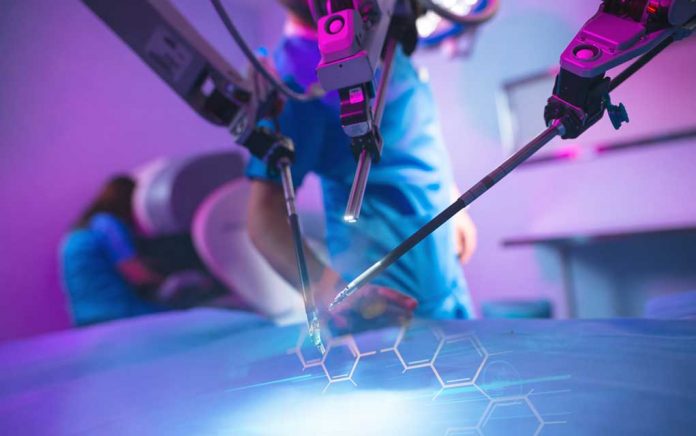
7 REAL Medical Procedures That Sound Like Science Fiction
(AscendHealthy.com) – Surgery is always a big deal, so the less invasive doctors can make it, the better. Robotic surgery has only been in mainstream use for a few decades, but more and more, doctors are offering the option for a growing variety of procedures. We have details on the hows and whys of robotic surgery and when it’s most likely to be an option.
Robotic Surgery: The Basics
Robotic surgery has several advantages over traditional surgery, especially when the area is hard to reach or in a tight spot. UCLA Health explains that robotic surgery only requires tiny incisions, with robotic arms able to reach places where human hands can’t.
The less a surgeon has to cut, the less trauma they impose on the body, which means the patient can heal faster and is less likely to develop secondary infections. Patients also tend to experience less pain and can return to their normal routines faster.
This option also offers greater precision, allowing surgeons the ability to make small, specific moves using an amplified camera view. Despite the term, robots are never in charge of any surgical decisions and don’t make any automated actions. Every move is under complete control of the surgeon, who usually sits at a computer inside the operating room beside the patient.
Procedures That May Be Robotic
Some procedures can be harder to perform traditionally without causing major trauma to the body. Here are some surgeries more commonly performed robotically:
- Colorectal surgery includes life-saving procedures to remove cancers of the colon and rectum as well as options to repair prolapses of the rectum and pelvic organs. Robotic surgery can limit damage to the area, sparing sphincters and vastly improving recovery.
- Gynecologic surgery used to require massive incisions that made recovery time lengthy. Women with fibroids, endometriosis, and other gynecological issues now often opt for robotic surgery to minimize their recovery times.
- Heart surgery traditionally requires breaking or cutting away at the bones that protect the heart. Robotic surgery eliminates that need, revolutionizing the procedure.
- Thoracic surgery, like open-heart surgery, can involve massive trauma to the chest. Robotic procedures can give people who have lung cancer or other issues in that region options that require zero broken bones and significantly less recovery time.
- Head and neck surgery using robots may help patients avoid tracheostomies and expensive ICU stays. People with cancer of the tonsil, tongue, nasopharynx or other regions in the jaw and throat, along with sufferers of sleep apnea and other structural issues that need surgical attention, can avoid trauma and excessive scarring to the face by going robotic.
- Urologic surgery allows surgeons to perform around delicate nerves and tissues in the urinary tract, reducing the risks of damage and function loss. Cancers of the bladder and kidney, and even incontinence, can be more accurately performed using a robot.
- General surgery, such as procedures to remove gallstones or treat pancreatic disease, may benefit from the added precision and reduced trauma of robotic surgery.
Medicine has come a long way, especially in surgery. Robots might not be ideal in all situations, but they could help improve recovery times in many of the above cases. All surgeries have risks, so patients should discuss the pros and cons of robotic surgery with their doctors to make sure it’s their best option.
~Here’s to Your Healthy Ascension
Copyright 2023, AscendHealthy.com




















